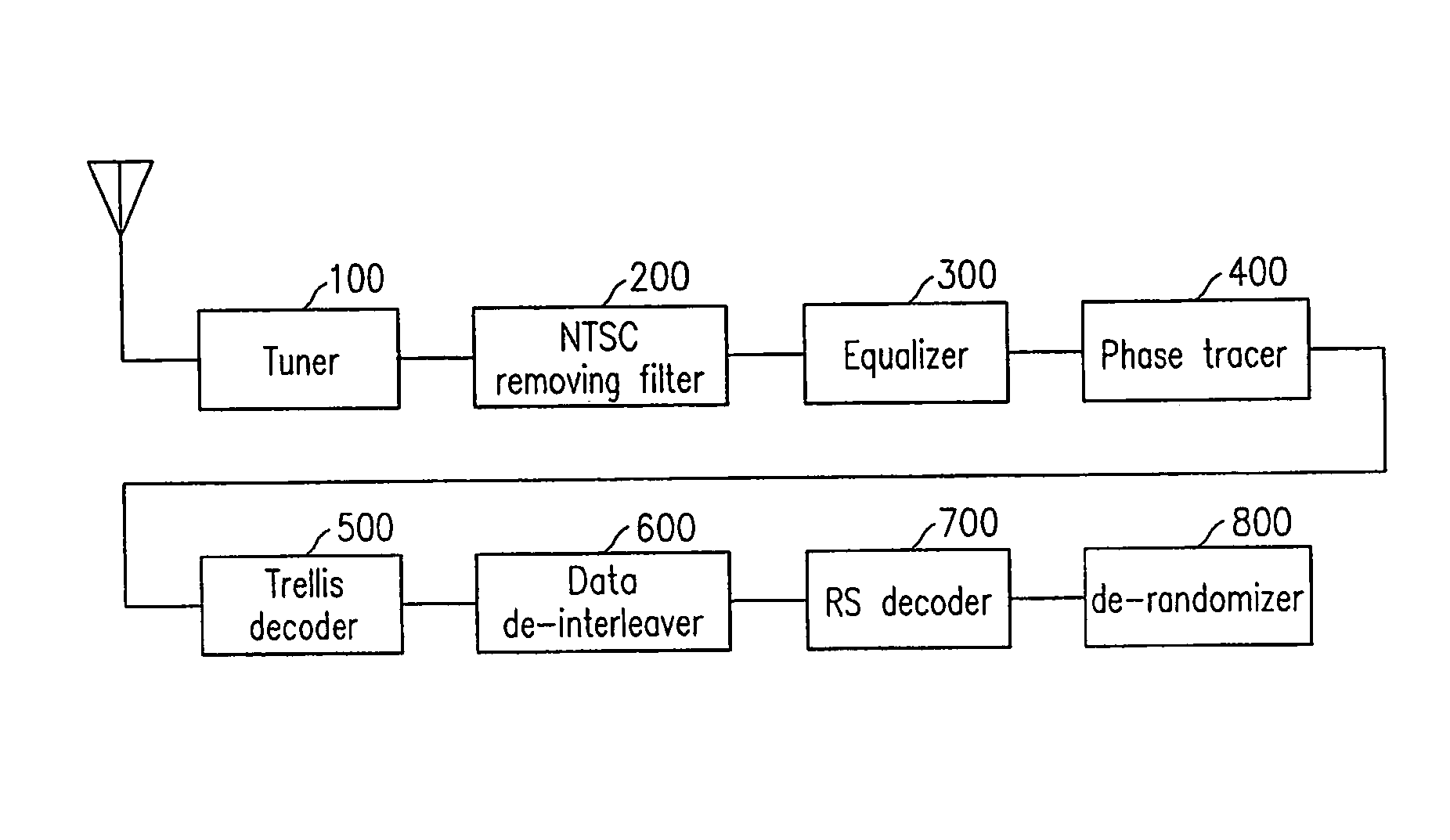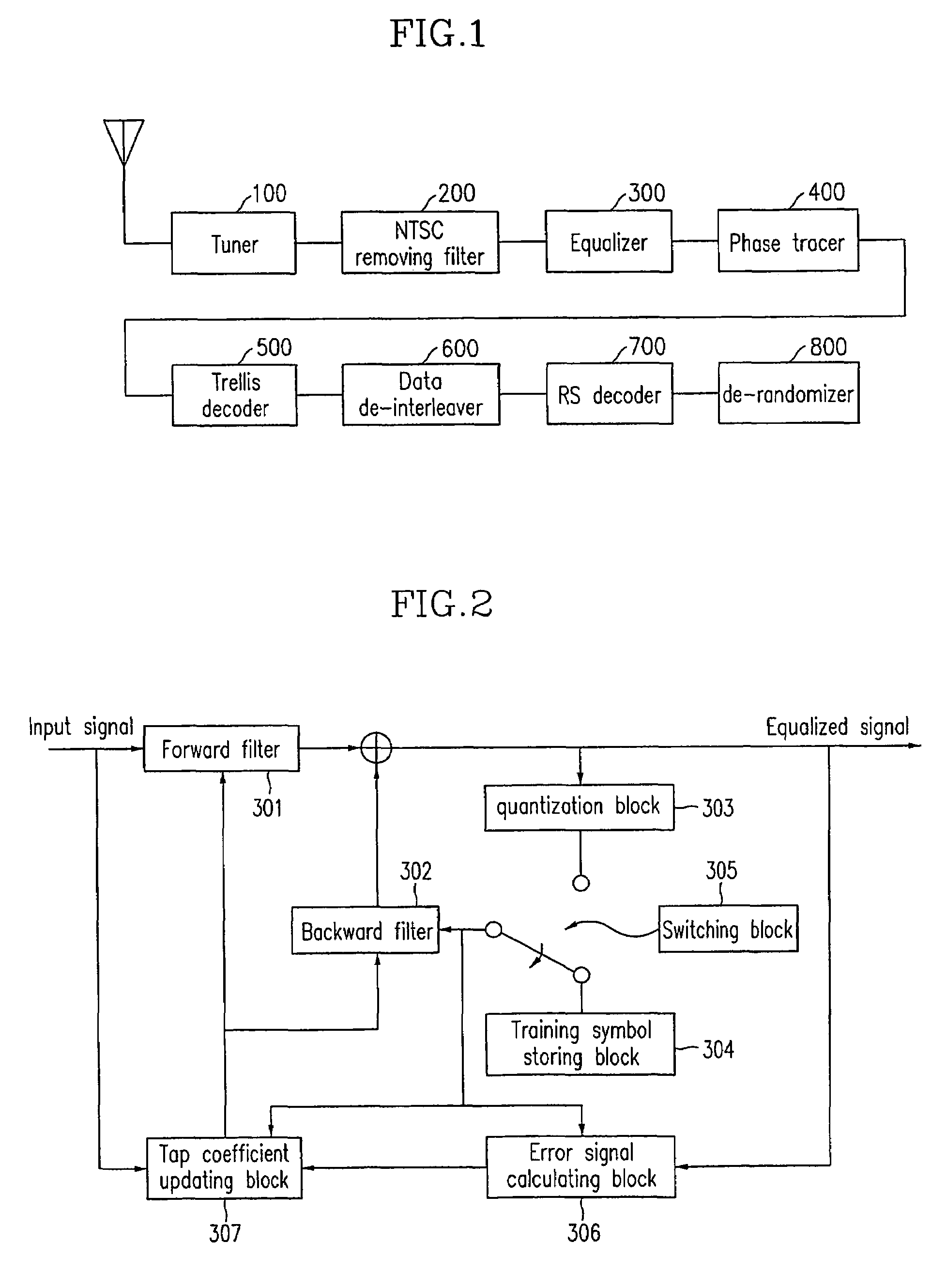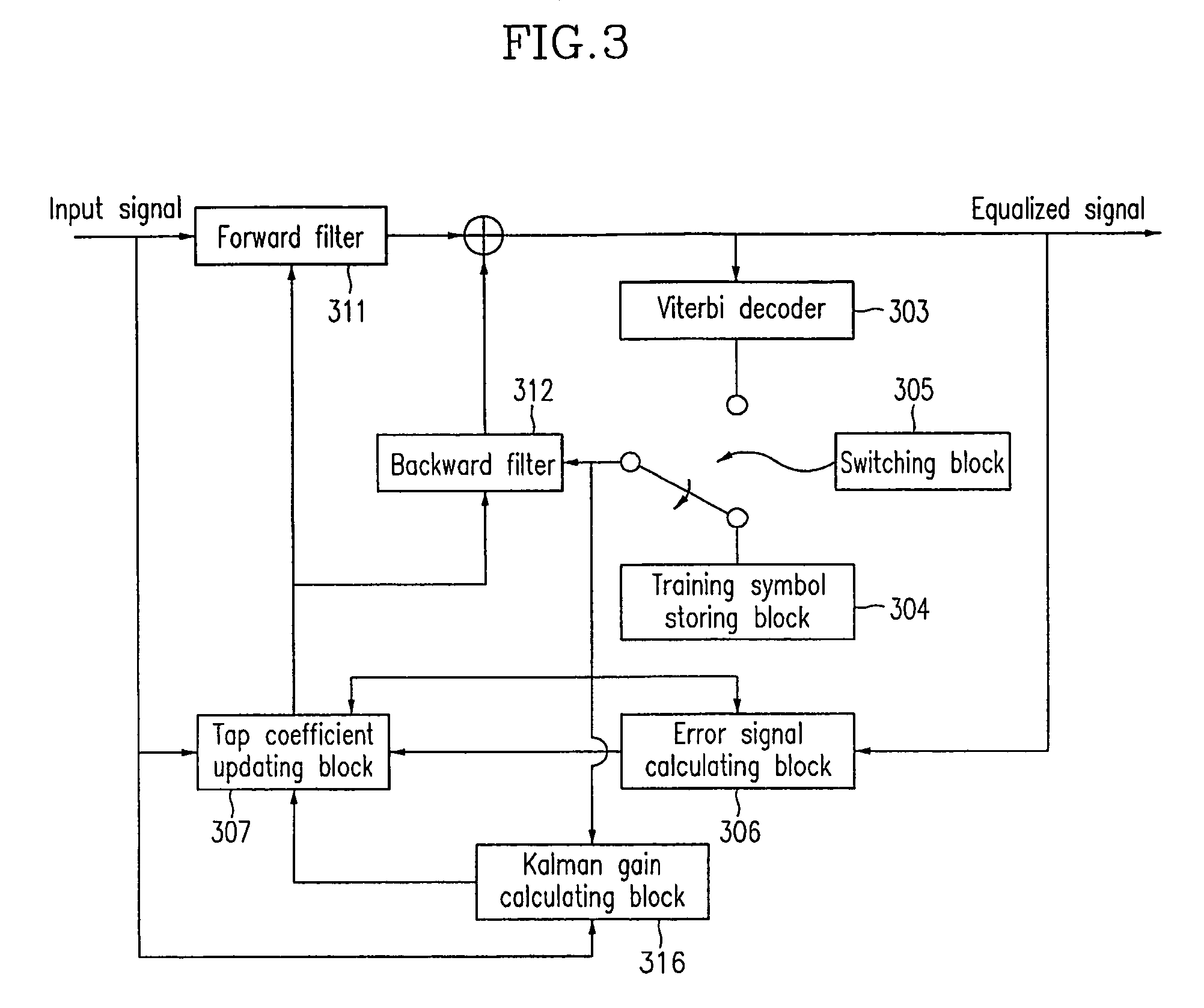Kalman-viterbi joint channel equalizer
a technology of equalizer and channel, applied in the field of equalizer, can solve the problems of reducing the reception performance of a receiver such as a digital television, affecting neighboring symbols, and affecting the reception performance of the receiver, so as to achieve the effect of eliminating transmission errors and facilitating the resolution of distortion
- Summary
- Abstract
- Description
- Claims
- Application Information
AI Technical Summary
Benefits of technology
Problems solved by technology
Method used
Image
Examples
Embodiment Construction
[0028]In the following detailed description, only the preferred embodiment of the invention has been shown and described, simply by way of illustration of the best mode contemplated by the inventor(s) of carrying out the invention. As will be realized, the invention is capable of modification in various obvious respects, all without departing from the invention. Accordingly, the drawings and description are to be regarded as illustrative in nature, and not restrictive.
[0029]At first, a fast Kalman algorithm will be described by referring to Falconer's paper in the following.
[0030]Various kinds of signals, filter coefficients, and other variables may be defined as below.
[0031]xN(n): input signal vector for overall filters
[0032]y(n): forward filter input signal sample
[0033]d(n): desired signal
[0034]xN(n)=[y(n−1), . . . y(n−N1)|d(n) . . . d(n−N2)]T
[0035]ξp(n)=[y(n)d(n)]T
[0036]ρp(n)=[y(n−N1)d(n−N2)]T
[0037]εp(n): forward preceding error
[0038]εp(n)′: forward following error
[0039]ANp(n)...
PUM
 Login to View More
Login to View More Abstract
Description
Claims
Application Information
 Login to View More
Login to View More - R&D
- Intellectual Property
- Life Sciences
- Materials
- Tech Scout
- Unparalleled Data Quality
- Higher Quality Content
- 60% Fewer Hallucinations
Browse by: Latest US Patents, China's latest patents, Technical Efficacy Thesaurus, Application Domain, Technology Topic, Popular Technical Reports.
© 2025 PatSnap. All rights reserved.Legal|Privacy policy|Modern Slavery Act Transparency Statement|Sitemap|About US| Contact US: help@patsnap.com



